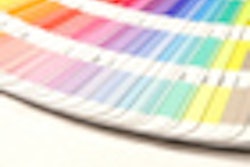
Achieving a perfect shade match is always a challenge. One trick to achieving better results is to rearrange the Vita Classical shade guide according to value. It has been suggested that using this approach can yield more successful color determination because human vision is more sensitive to changes in value than in hue.
But new research to be presented at the upcoming International Association for Dental Research (IADR) conference in Barcelona, Spain, found that this method may not be more effective than using the shade guide in its original form.
Researchers from Vrije University and the Academic Centre for Dentistry Amsterdam wanted to evaluate whether systematically arranging a Vita Classical shade-guide system according to lightness (L*) helped clinicians score a shade match more often than with a conventional arrangement based on hue groups (A1-4, B1-4, C1-4, and D1-4).
They asked 50 dental students to independently determine the shade of tooth #11 of three patients with two differently arranged and blinded shade guides under standardized conditions. The L*a*b* values of the chosen shade tabs were then compared to the previously determined L*a*b* values of the teeth using a clinical spectrophotometer.
Among their findings:
- No statistically significant differences were found between the two arrangements of the shade guides for the three patients.
- Correct color match was selected 0% of the time for tooth #11 in patient 1, 12% for tooth #11 in patient 2, and 50% for tooth #11 in patient 3.
"Dental students who used a Vita Classical shade guide system arranged according to an increase in lightness were not more or less successful in selecting the correct tooth shade than when the same system was arranged according to the conventional design, though a slight advantage for the conventional arrangement was observed," the authors concluded.
A better approach?
Thomas Ziemiecki, D.D.S., an associate professor of prosthodontics at the University of North Carolina at Chapel Hill, told DrBicuspid.com that he was not surprised by the results. However, it does illustrate a rather significant problem, he added.
When the correct color match was selected 0% of the time for patient 1, 12% for patient 2, and 50% for patient 3, it shows that by using a replica for comparison to obtain shade correlation there are still many concerns, Dr. Ziemiecki said. "On average this study only had a correct shade selection of 21%."
One concern Dr. Ziemiecki raised about the study was the use of dental students as the observation group. He noted that it would be interesting to repeat this same protocol using practitioners who have experience and even built-in biases for certain shades as the new control group.
"I wonder if their correct shade selection rate would be greater than 21%," he said.
Also, the arrangement by value versus groups is only meant to be an alternative to those who want to try something else to improve their ability to select the correct shade, "knowing what we know about the physiology of sight," he noted.
When looking at data, some references state that up to 75% of improper shade selection involves deviation in value (Dental Economics, January 2002, Vol. 92:1, pp. 62-67), Dr. Ziemiecki said. This data is consistent with information from dental laboratories, he concluded.
Copyright © 2010 DrBicuspid.com



















